First woman MP Markievicz honoured in Parliament
- Published
Abstentionist Irish rebel MP finally enters Westminster
One hundred years after winning a seat in the House of Commons, the first woman MP finally graces the corridors of Westminster.
It was a seat that Constance Markievicz never took - in line with Sinn Féin's abstentionist policy.
Remarkably, she fought the 1918 election for the constituency of Dublin St Patrick's from a cell in Holloway prison - and out of 18 women candidates, she was the only one to win a seat.
Her portrait, donated by the Irish parliament, was received on Wednesday by Speaker John Bercow on behalf of the House of Commons.
Ready to die for Ireland
Born in 1868, Constance Gore-Booth was an Anglo-Irish aristocrat, but developed an allegiance to an Irish Republic.
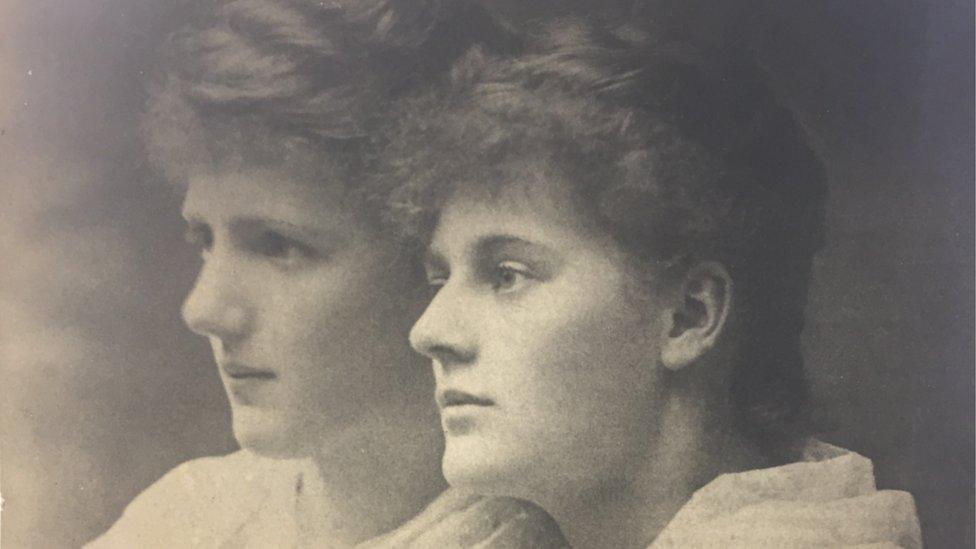
WB Yeats immortalised Constance Gore-Booth, left, and her sister Eva, as "two girls in silk kimonos, both beautiful, one a gazelle"
She spent her childhood at Lissadell House in County Sligo, but was eager to travel and studied art in London and Paris.
It was at the Académie Julian in Paris that she met Casimir Markievicz; the pair married in London in 1900.
Commonly known as Count and Countess Markievicz, her family and some historians have raised questions about the provenance of the title.
Campaigned against Churchill
Constance Markievicz - or Madame de Markievicz, as she was known - was the first woman elected to the House of Commons, and she was the first woman elected to the First Dáil.
Speaker of the Dáil (Irish parliament) Seán Ó Fearghaíl believes both the British and Irish people "need reminding just how magnificent this woman was".
"She was an extraordinarily influential" woman, he added.

Constance Gore-Booth, pictured here as a debutante in 1884, soon became involved in the suffragist movement
Lauren Arrington, a senior lecturer at the Institute of Irish Studies at Liverpool University, said Markievicz was exposed to alternative political opinions while she was in the French capital.
"She was at the centre of an avant-garde culture in Paris and she encountered ideals that were sensible to her - that women should be equal to men," said Dr Arrington.
Constance joined her sister, Eva, in Manchester in 1908: As key players in the Barmaids' Political Defence League, they successfully campaigned against the re-election of Winston Churchill in the Manchester North West by-election.
Hearing executions from her cell
But while Markievicz was an anti-imperialist, the 1913 Dublin lockout was a pivotal moment for her.
"It's the lockout and the formation of the Irish Citizen Army which brings her to republicanism," said Dr Arrington.
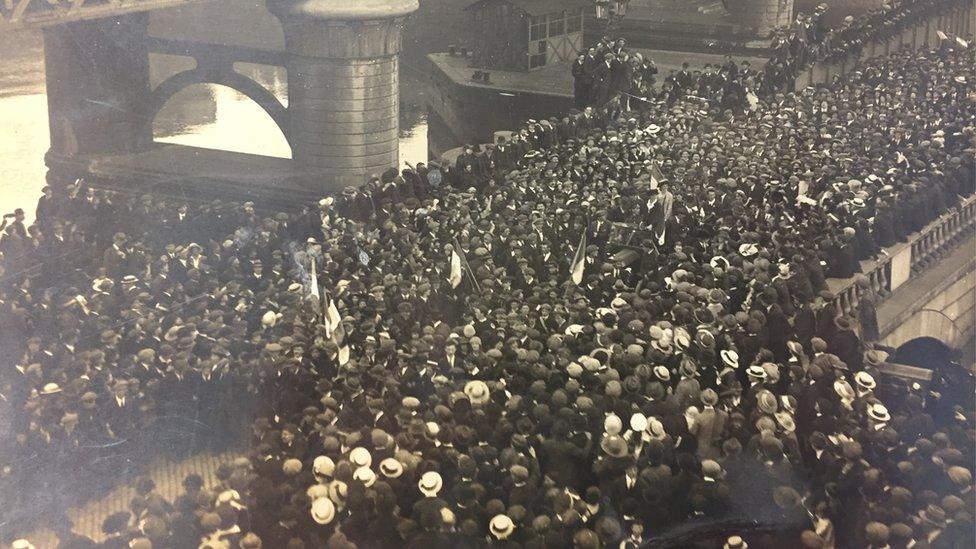
Constance Markievicz was hailed as a hero when she returned to Dublin from prison in 1917
Constance Markievicz took part in the Easter Rising of 1916 and fought against British crown forces under socialist rebel Michael Mallin at St Stephen's Green in Dublin.
On Easter Monday Dublin Metropolitan police officer Michael Lahiff was shot three times when he was at St Stephen's Green and he later died in hospital.
It is believed Mr Lahiff was shot by Markievicz.
The rising was unsuccessful and the ringleaders, including Markievicz, were sentenced to death.
At her court martial, Markievicz declared she was "ready to die for Ireland one way or another".
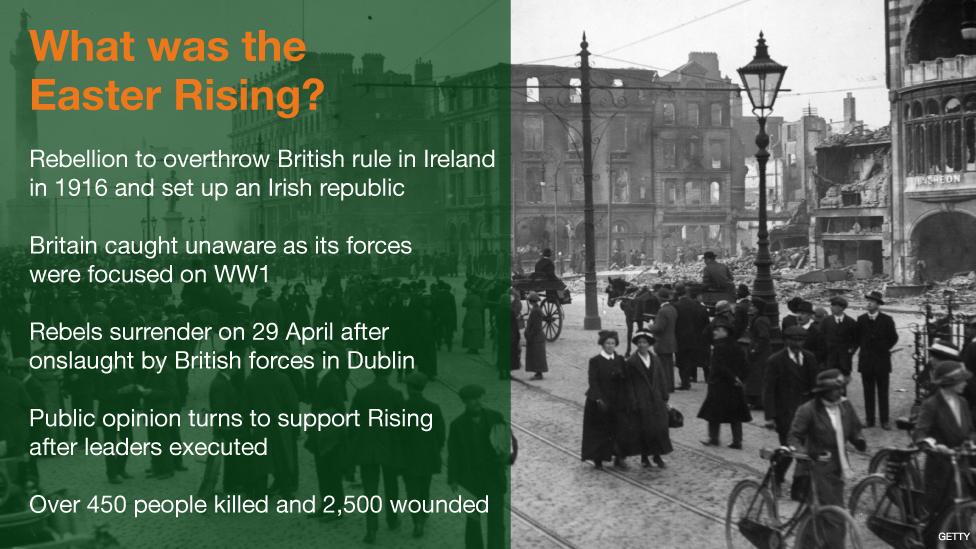
However, Markievicz's death sentence was commuted to life in prison because she was a woman.
This greatly frustrated her, according to Dr Arrington.
"It annoyed her as she felt that she shouldn't get off purely because she was a woman, and she also felt some responsibility for the jailed rebels she knew from Na Fianna Éireann - a nationalist youth organisation Markievicz co-founded with Bulmer Hobson," explained Dr Arrington.
"In the first few days after the Rising she was in prison in Kilmainham Gaol, and she could hear the other executions happening from her cell.
"That was torturous for her."

The gifting of the portrait is just one of the ways in which the Houses of the Oireachtas and the UK Parliament are marking the centenary of women's suffrage
Proud Irish patriot
Although Constance Markievicz was released from prison in 1917 under a general amnesty, she was detained again by 1918.
The British government feared a repeat of the 1916 Easter Rising and arrested most of the Sinn Féin leadership charging them with entering into treasonable communication with the German enemy.
"The charges were trumped-up", explains Dr Arrington adding that "the government underestimated the extent to which the imprisonment would be a rallying-cry and actually increase Sinn Fein's political power".

Constance Markievicz died in 1927 aged 59, nine years after refusing to take her seat in Westminster
Later that year, Prime Minister David Lloyd George called a general election immediately after Armistice Day.
Campaigning from a cell in London's Holloway prison, Markievicz combined her suffragist ideals with her anti-imperialism.
"Her platform was for a republic in which men and woman would be equal, and Ireland would be free to pursue its own destiny," said Lauren Arrington.
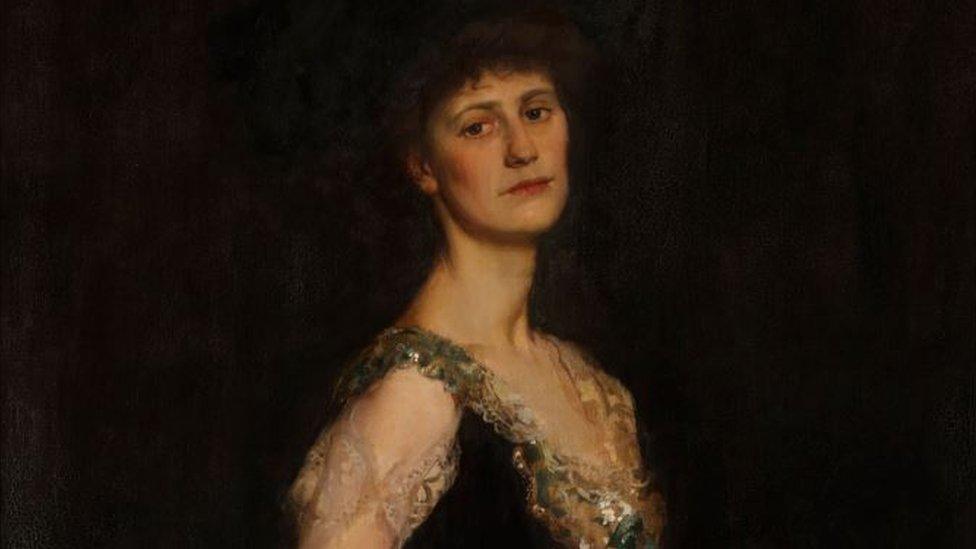
Constance Markievicz was sentenced to death for her part in the 1916 Easter Rising in Ireland
Rather than take her seat in the House of Commons, Madame de Markievicz - along with 72 other Sinn Féin MPs - refused to acknowledge the authority of the British government, and instead helped establish the First Dáil at Dublin's Mansion House in January 1919.
Markievicz died in 1927 aged 59, in a public ward in Dublin's Sir Patrick Dun's hospital.
Her funeral was attended by the great and the good of Irish society, including future President Éamon de Valera.
Allow X content?
This article contains content provided by X. We ask for your permission before anything is loaded, as they may be using cookies and other technologies. You may want to read X’s cookie policy, external and privacy policy, external before accepting. To view this content choose ‘accept and continue’.

Aristocrat, abstentionist, anti-imperialist, suffragette, feminist, and Irish revolutionary, Constance Markievicz is now honoured in the House of Commons for her role in Anglo-Irish history.
Her portrait forms part of the UK Parliament's Voice and Vote exhibition until 6 October, when it will be transferred to nearby Portcullis House to go on public display.
- Published15 November 2017
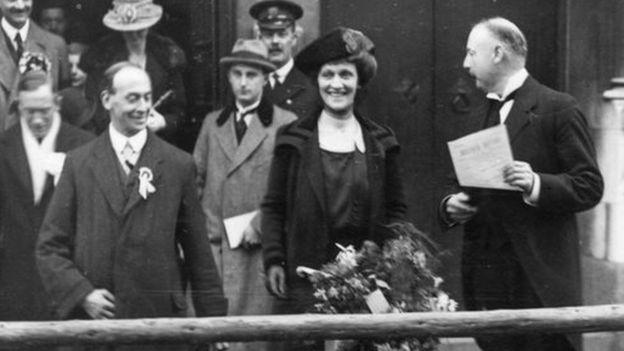
- Published6 February 2018
- Published6 February 2018
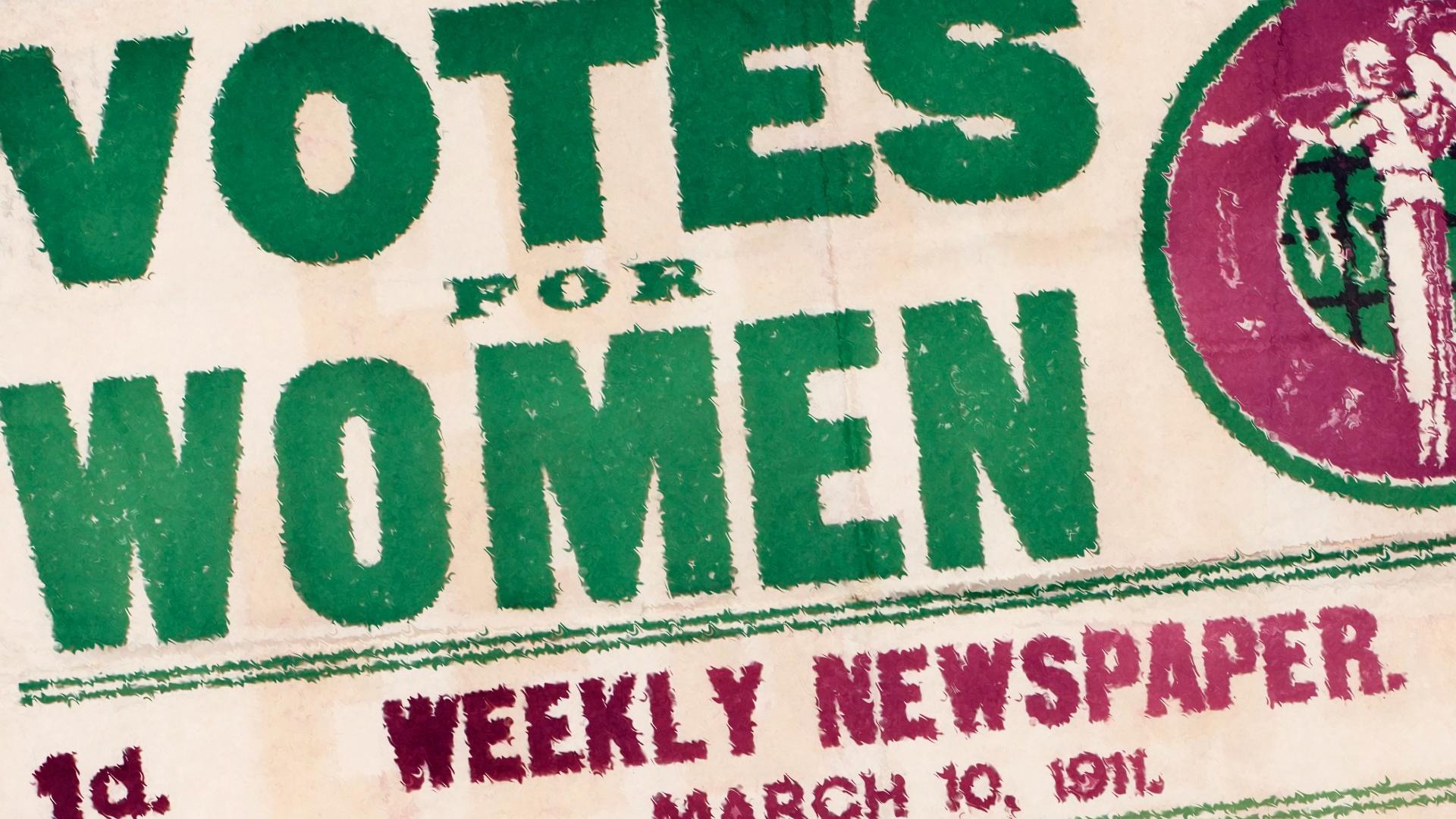
- Published13 February 2016
